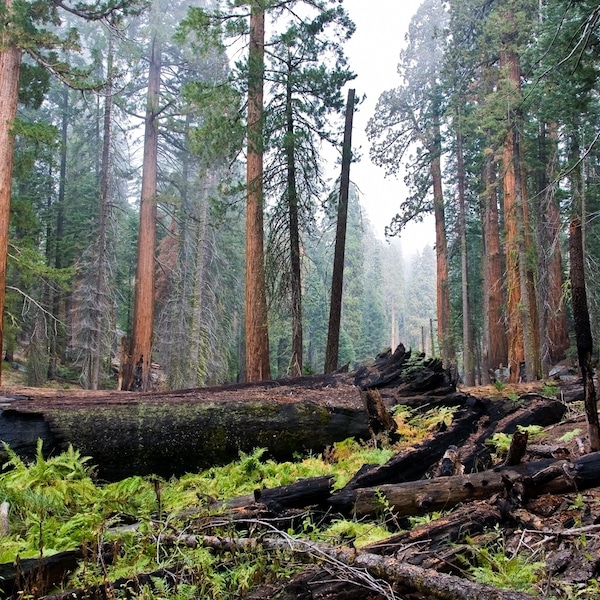View this post on Instagram
Here's a thought exercise many of us would like to avoid: think about all the waste that you accumulate in a day, a week, or a month. Then, consider the people in your community and the world at large. The waste that we all create really adds up. It can feel overwhelming and distressing.
While recycling and composting are two options for sustainably getting rid of rubbish, there are some plastics that can’t be easily recycled and go straight to the landfill. It leaves us wondering: how do you mitigate waste and take personal responsibility for the plastic problem?
The first thing to do is to try and curb your reliance on single-use plastics. Opt for reusable containers, fabric totes, beeswax covers, and anything else that can be used time and again. But as much as you make the eco-friendly switch, plastics are unfortunately unavoidable.
Making ecobricks are one way to do something with your plastic without putting it in a landfill. The idea is simple: plastic bottles are filled with bits of unrecyclable plastic and then used to build things. And best of all, they are simple to create—anyone can do it—and require minimal supplies to get started.
When done correctly, ecobricks become solid plastic bricks that can be used to build structures. This keeps the plastics from degrading into toxins and microplastics while making them useful—all while showing the power of regenerative construction.
Scroll down to learn more about ecobricks and the steps to take in creating your own.
What is an ecobrick?
View this post on Instagram
An ecobrick, at its core, is a way to keep plastic out of the biosphere. It offers a way to reframe the idea of waste by packing it into a usable building block for a more sustainable future. A PET plastic bottle is filled and condensed with clean and dry used plastic.
When complete, an ecobrick can be put into short or long-term use. Short-term uses include furniture and modular functionality in open spaces. Long-term uses can be in gardens and for Earth building, which is inspired by the traditions of structures built long ago.
But regardless of the way you chose to use your ecobricks, they must fit the criteria established by the Global Ecobrick Alliance (GEA):
- An ecobrick is not made for profit.
- The plastic within them is compacted by hand and secured so that it can have long or short-term use.
- An ecobrick is filled with plastics that’s already been used, so it and CO2 are being subtracted from the biosphere (by virtue of it now being in an ecobrick).
- It’s used in building something that contributes to the “maintenance and encouragement of biodiversity.”
- Making an ecobrick is a consciousness-raising experience for those who are involved in it.
There are multiple types of ecobricks you can make, but the most common is simply called a regular ecobrick. This type is made with PET bottles—think soda bottles—that are then packed with clean plastic that’s been cut or ripped into small pieces. Layers are added and then compacted with special attention paid to evenly distributing the plastic and forming a solid, sturdy brick.
Why should you make an ecobrick?
View this post on Instagram
Plastic has changed our world and made the previously impossible possible. But it is also a huge problem for our environment and is directly contributing to the climate crisis. To do our part, we need to think about living in a circular way; the things that we use needn't be tossed when they are done. They can be repaired, or they can be part of something larger so that nothing is thrown away and there is an immense value added to our lives and the lives of others.
Ecobrick turns bits of plastic into something useful that doesn’t contaminate our environment. Making one—and many more—will get you thinking about other ways you can be more conscious of what you’re getting rid of. It will empower you to build and help others in your community.
View this post on Instagram
How to Make an Ecobrick (and Tips for Doing So)

Photo: Ekaterina-P/Depositphotos
Making an ecobrick is easy, but there are some things you need to know and consider in order to make sure that your brick stands the test of time.
Step 1: Save and separate your clean and dry plastics.
Potential plastics include food packaging bags, straws, and clear plastic, like cling wrap. Make sure that each piece is clean and dry. This is very important because dirty or wet plastic inside your ecobrick can lead to bacteria (and other pesky microorganisms) to form and produce methane, degrading your ecobrick in the process. You can wash your plastic in a washing machine or dishwasher (avoid heat drying).
Keep your ecobricks to include only plastic—no metal, glass, or paper. Metal and glass can puncture the sides and paper will break down (unlike plastic).
Step 2: Choose a bottle and stick with it.
Find a PET bottle size and design you like and plan to stick with it. Having bottles that are all the same size makes it easier to build because of the uniformity. Opt for something that’s easy to obtain and consider what you’ll be using the bricks for.
Smaller bottles (like a soda bottle or something similar) are good for beginners so you can easily fill the ecobrick and figure out what was working and what you’ll change. If you’re working with others or giving ecobricks away, the size is more consistent, too.
You will also want to figure out an end-use for your ecobricks. Depending on what you’re building, you might require different size bottles.
Step 3: Grab a stick.
You will need a stick to compact the plastic in your eco-brick. Bamboo and wood are recommended. If you need a place to start, try the end of a wooden spoon.
Step 4: Get colorful.
Start your ecobrick with a color to aid in design, especially when multiple bricks are being used. To do this, use soft plastic that’s in a solid color (such as a plastic bag from the grocery store) and push it down to fill up the first half inch of your brick.
@ecotokcentral Make sure there’s not too much candy residue before putting them in though! #ecotokcentral #halloween #savetheearth #lettheearthbreathe #climatechange #oceanpollution #takeaction #ecobricking ♬ gilded lily –
Step 5: Fill your bottle and condense the layers as you go.
Cut the plastic into smaller pieces to make it dense. Start filling the bottle with loose plastic and then use your stick to compress it. Make sure you work around the bottle to ensure that the layering is even and not bulging in certain places.
You want it to be solid—it should be heavy when you’re done–but don’t pack your ecobrick too full. Otherwise, the top might eventually burst and it will no longer be a viable ecobrick. Leave a little less than an inch of space between the plastic filling and the cap.
Step 6: Weigh your ecobrick.
It’s important that your ecobrick meets certain standards for integrity in building. An ecobrick’s minimum weight has to be its bottle volume multiplied by .33. If you were using a 600ml bottle, for instance, it would need to weigh at least 200 grams (seven ounces).
If you’re planning on building something, you will want to designate a minimum density so that things stay consistent and will be structurally sound.
Step 7: Record your ecobrick.
Using enamel paint or nail polish, write the weight, date, intended project, and serial number generated by the GoBrik app. Don’t use tape or stickers to do this, however, and avoid permanent markers if possible. They aren’t permanent solutions and will eventually come off the bottle.
Step 8: Store until you’re ready to use.
Make sure your ecobricks are ready to use in the future by properly storing them out of the Sun, wrapped so they don’t collect dust, and set off the floor.
View this post on Instagram
Frequently Asked Questions
What is an ecobrick?
Ecobricks are plastic bottles filled with bits of unrecyclable plastic and then used to build things.
What is an ecobrick used for?
Ecobricks have short and long-term uses in building. Most notably, they can be used to build structures in the place of conventional bricks.
Is it easy to make an ecobrick?
Yes. You only need plastic, a plastic bottle, and a stick to make your own ecobrick.
Related Articles:
LEGO Unveils New Sustainable Toy Bricks Made From Recycled Plastic Bottles
Coca-Cola Unveils Its New Sustainable Paper Bottles Ready for Testing






















































































